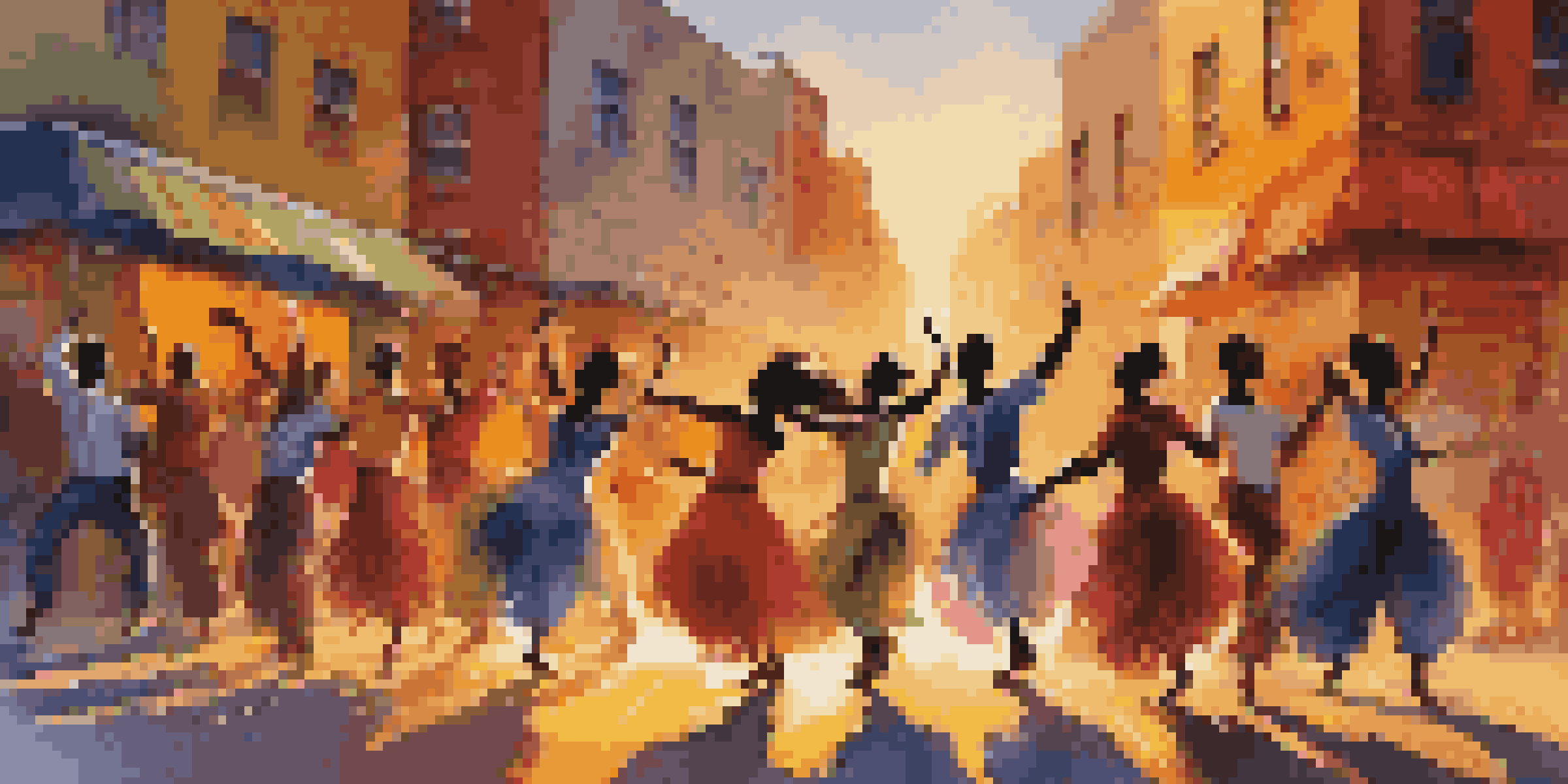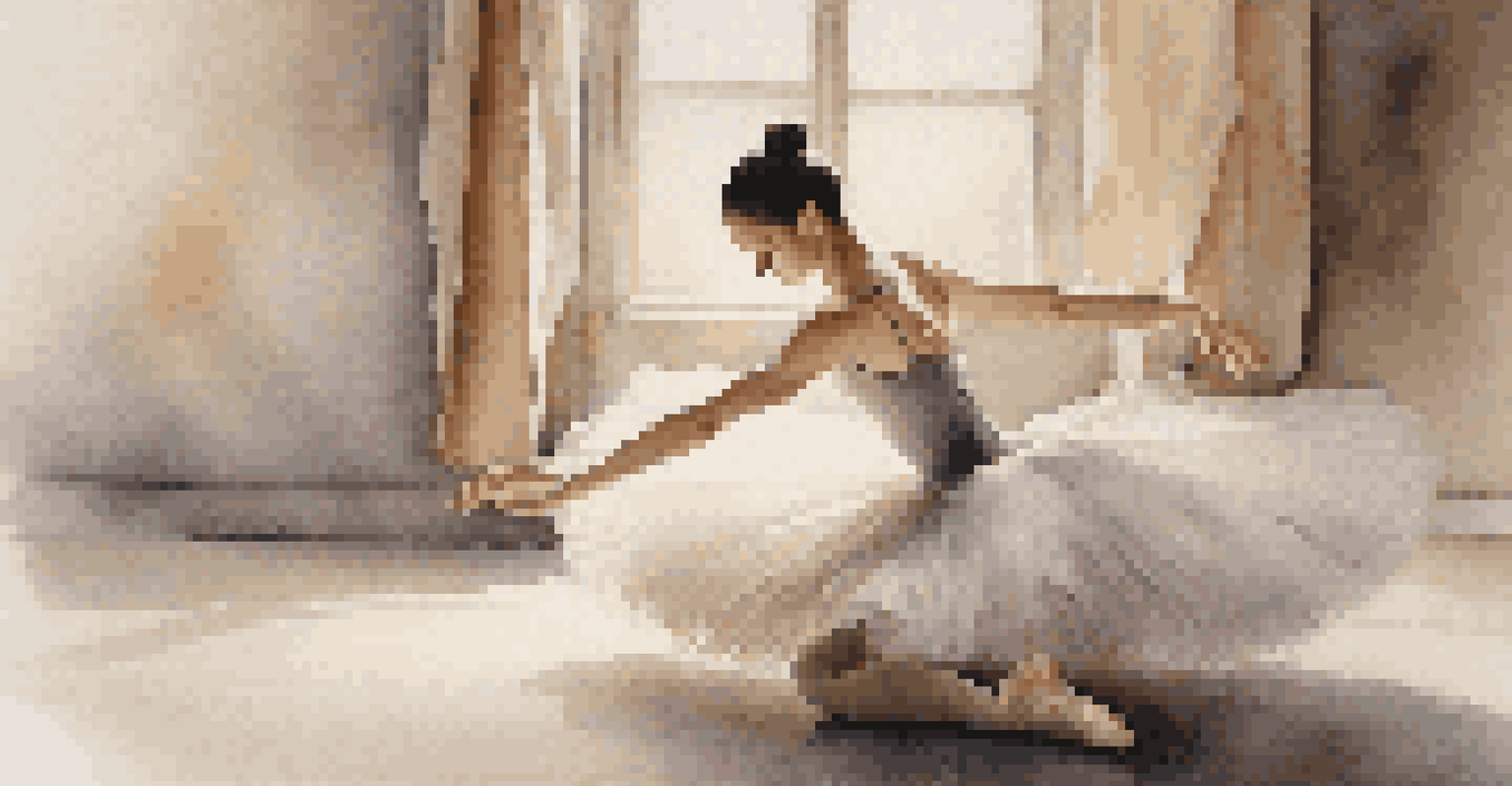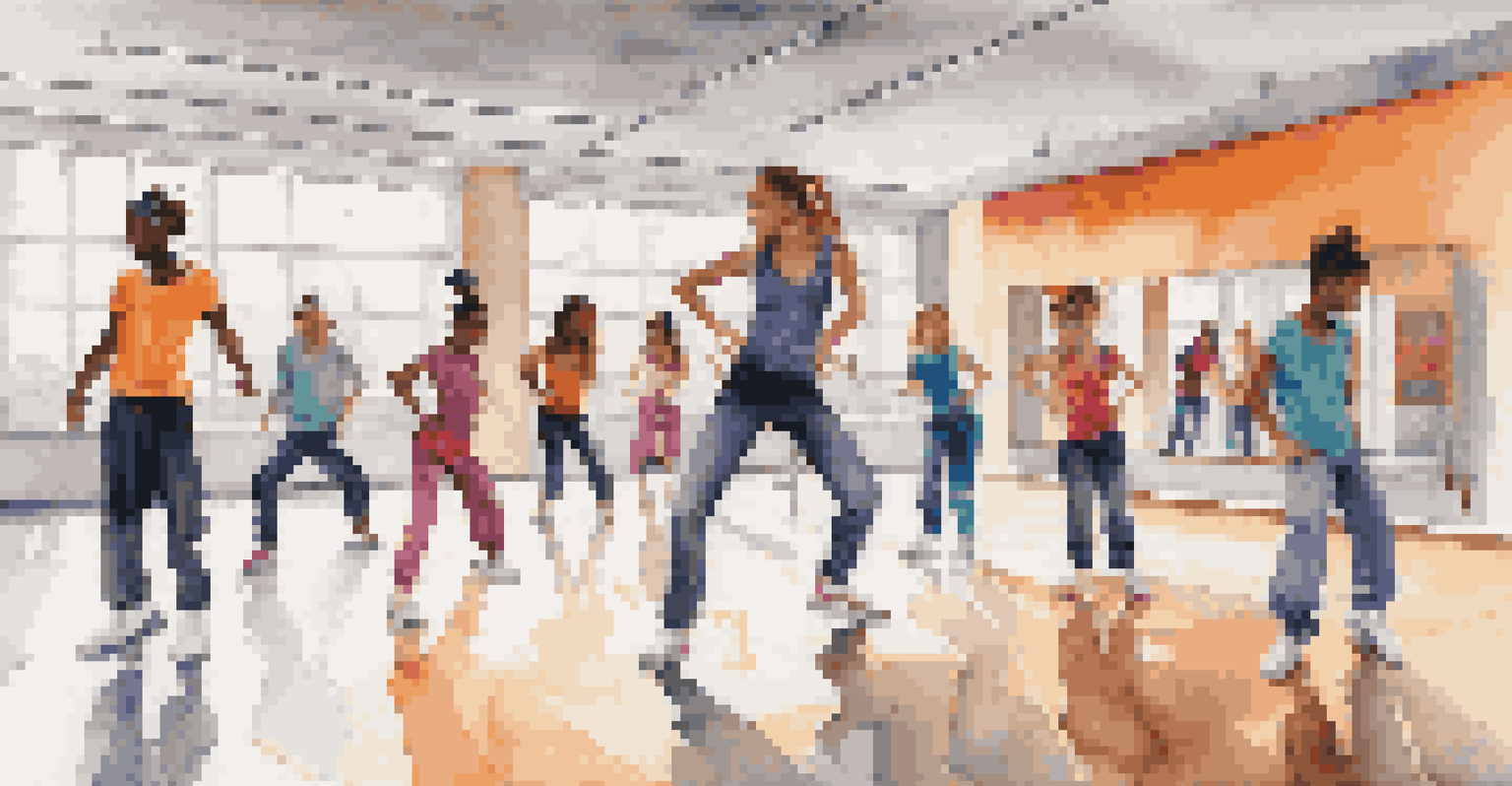Dance and Identity: Exploring Cultural Representations in Film

The Power of Dance in Cultural Expression
Dance serves as a universal language, transcending barriers of speech and culture. In film, it becomes a powerful medium for expressing identity, often capturing the essence of a community's heritage. When characters dance, they reveal their emotions and traditions, inviting viewers into their world and fostering a deeper understanding of diverse backgrounds.
Dance is the hidden language of the soul.
For instance, films like 'Billy Elliot' showcase the struggle of a young boy breaking free from societal norms through ballet, symbolizing not just personal growth but also a challenge to the rigid expectations of his working-class environment. Similarly, 'Black Swan' delves into the psychological aspects of identity, where dance is both an art form and a battleground for self-discovery.
Thus, dance in film embodies more than just movement; it represents the intricate tapestry of cultural identities and personal narratives, making it a vital component of storytelling.
Historical Context: Dance and Identity Evolution
Throughout history, dance has evolved alongside societies, reflecting the changing dynamics of identity. From traditional folk dances that celebrate community ties to contemporary styles that embrace individual expression, each era has its own narrative. Films often mirror these transitions, highlighting how cultural identities adapt in response to social changes.

Take 'Fame' for example; it showcases a diverse group of students at a performing arts high school, each bringing their unique backgrounds into their dance. The film not only celebrates individuality but also emphasizes the collective identity formed through shared passion and struggle. This dynamic interplay of personal and cultural identity is a recurring theme in many dance-centered films.
Dance as Cultural Expression
Dance serves as a universal language in film, expressing identity and inviting viewers into diverse cultural narratives.
By examining historical contexts, we can see how dance in film serves as a reflection of cultural shifts, allowing audiences to appreciate the evolving nature of identity through movement.
Cinematic Techniques: Highlighting Dance and Identity
Filmmakers employ various cinematic techniques to emphasize the relationship between dance and identity. From camera angles that capture the grace of movement to editing styles that mirror the rhythm of the dance, these choices significantly enhance storytelling. For instance, slow-motion shots can heighten emotional moments, allowing viewers to connect more deeply with the characters' journeys.
The dance is a poem of which each movement is a word.
Moreover, the use of color and lighting in dance sequences can symbolize cultural elements or personal struggles. In 'La La Land,' vibrant colors illustrate the characters' dreams and aspirations, while their dance routines express their inner conflicts and desires. This visual representation further reinforces how dance encapsulates complex identities.
Ultimately, these cinematic techniques not only showcase the beauty of dance but also deepen our understanding of the characters’ identities, creating a richer viewing experience.
Cultural Appropriation vs. Appreciation in Dance Films
The line between cultural appropriation and appreciation in dance films can be delicate. While filmmakers often draw inspiration from diverse cultures, it's crucial to navigate these representations thoughtfully. Cultural appropriation occurs when elements of one culture are used without permission or understanding, often exploiting the source community for profit.
Films like 'Step Up' and 'You Got Served' have faced criticism for appropriating hip-hop culture without adequately representing its origins. In contrast, movies that authentically collaborate with cultural communities tend to resonate more positively, fostering a sense of respect and understanding. This approach not only enriches the film but also honors the cultural significance of the dance forms depicted.
Navigating Cultural Appropriation
The distinction between cultural appropriation and appreciation is vital in dance films, emphasizing the need for respectful representation.
Highlighting this distinction in the film industry encourages a more mindful representation of dance, celebrating cultural diversity while respecting its roots.
Dance as a Tool for Social Commentary in Film
Dance in film often serves as a powerful tool for social commentary, addressing issues such as race, gender, and class. Through choreography and performance, filmmakers can convey complex messages about societal norms and injustices. For example, 'West Side Story' uses dance to portray the tensions between rival gangs, showcasing both the beauty and brutality of their world.
Similarly, 'The Last Dance' illustrates the struggles of athletes in a highly competitive environment, using dance as a metaphor for their fight against adversity. These narratives highlight the intersection of dance and identity, revealing how movement can challenge societal expectations and inspire change.
By integrating social commentary into dance sequences, filmmakers not only entertain but also provoke thought, encouraging audiences to reflect on their own identities and the world around them.
The Role of Gender in Dance Representation
Gender plays a significant role in how dance is represented in film, shaping both character identities and audience perceptions. Traditional gender roles often dictate how male and female dancers are portrayed, with men typically depicted as strong and powerful while women are shown as graceful and delicate. However, contemporary films increasingly challenge these stereotypes, allowing for a more nuanced exploration of gender identity.
Movies like 'Footloose' and 'A Chorus Line' feature strong female characters who defy expectations through their dance, showcasing their independence and strength. These representations encourage viewers to reconsider societal norms around gender and dance, celebrating a broader spectrum of identities. By doing so, filmmakers contribute to the ongoing conversation about gender equality and empowerment.
Gender Roles in Dance Films
Gender representation in dance films is evolving, challenging traditional stereotypes and celebrating a broader spectrum of identities.
Ultimately, the evolving portrayal of gender in dance films reflects larger societal changes, inviting audiences to engage with diverse expressions of identity.
Future Directions: Dance and Identity in Cinema
As we look to the future, the relationship between dance and identity in cinema continues to evolve. With the rise of digital platforms, filmmakers are experimenting with new styles and narratives that celebrate diverse cultural identities. This shift allows for a broader array of stories to be told, highlighting the richness of global dance traditions.
Moreover, advancements in technology, such as virtual reality, open up exciting possibilities for immersive dance experiences that can further connect audiences to cultural identities. Films like 'The Greatest Showman' emphasize inclusivity, showcasing a variety of dance styles that represent different backgrounds and experiences. This trend not only enriches the cinematic landscape but also fosters a greater appreciation for diversity.

In embracing these developments, the film industry can continue to celebrate dance as a vital expression of identity, reminding us of its power to connect and inspire across cultures.